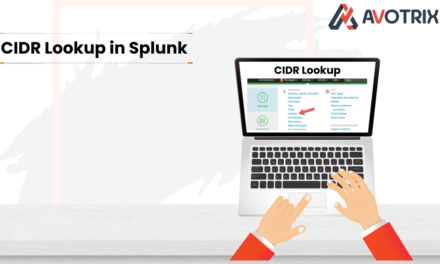How many times have we heard the quote – “Data is the new oil”? It means Data is an immensely valuable asset to all companies from Fortune 500 to small startups like oil was in the 18th century. Those who understand the power of data that is being generated and learn from it will be able to reap the rewards. With this data, companies can take better decisions, find new customers, improve their customer retention, improves the processes, see the performance of various entities and list goes on.
Data that is being generated by activities of various devices including computers, mobile phones, sensors, and cloud devices is called Machine data and it is usually unstructured and is extremely complex. This data is usually stored in different places and is of different formats. Hence, the analysis and management of this data become difficult. So how do we make all this data available easily? This is where Splunk comes in.
Splunk was founded in 2003 as a solution to problems faced by companies as they were unable to access the stored data in the infrastructure of the system. To explain it in simple words, it is an advanced technology that indexes and searches files that are stored in a system. This helps in analyzing the machine-generated data to provide insights and visibility into the data. It is a web-style interface that captures real-time data, stores it searchable containers, and helps produce graphs, reports, alerts, dashboards, and visualizations.
History of Splunk
Founders Erik Swan and Rob Das wanted to do something different rather than going with the trend of social mobile gaming. They spent a good two years between 2002 and 2004 talking to more than 60 companies and understanding their pain points. They asked one basic question to them; “How do you find problems in your environment?”. The answer was the same across all the company – It’s like digging through caves with headlamps!”. The term for this is Spelunking. That is how they named this software Splunk.
When we have a problem, we turn to Google for our help. Erik and Rob took this as their inspiration and tried to create a google for your log files where you can search for your log files (data from machines) as easily as you search the web. They wanted to make it available to every type of organization that deals with every kind of data.
Some famous companies using Splunk are:
- Cisco
- Bosch
- IBM
- Motorola
- PepsiCo
- Adobe
- Visa
- Adidas
- Salesforce
- Walmart
And many more!
Uses of Splunk:
1. Indexing
Splunk accepts all data immediately after installation. When it starts searching the data at that time it performs field extraction. Mostly all log formats are recognized automatically. This helps in bringing flexibility. Splunk can take any kind of data coming from the machines and create its index. When indexing is done it processes the data and sends it to storage.
2. It is Scalable
You do not have to worry about the backend database when you are using Splunk. This makes Splunk available on multiple platforms and can be installed speedily on any software. If one server is not enough another can be added easily, and data is divided across both these servers evenly. This increases the speed with the number of machines that are holding the data.
3. Search Processing Language
Splunk provides a search processing language that enables you to explore the data that you need, easily. Splunk is extremely useful for examining massive volumes of data and performing statistical operations for any circumstances. You can consider an example where you may want to get the information of applications that are slowest to open and as a result making the user wait for the longest. If you enter some simple words in a particular format in Splunk you will get the expected results.
4. Real-time Reporting and Alerting
Splunk visualizes data in graphs, pie charts, bar charts, etc. From statistics to correlations, everything can be captured in a report. Each report has a dashboard and gives the viewer many options for customizing and showing the necessary data. It also has an alerting mechanism that helps in managing your data. These alerts can be sent over an email, RSS feeds, or simply through a script.
6. Easy Monitoring and Diagnosis
With these massive amounts of data generated in an organization, it is sometimes difficult to quickly identify the root cause of issues. Splunk provides visibility and helps the customers to find problems and discover trends. Monitoring is much more apparent by looking at the indexes. All data get stored.
9. Dashboards for better management of data
Splunk helps in creating different dashboards that help in the management of the machine data. A unique dashboard is an assignment to each metric. As a result, the data is segregated and can be managed well.
10. Store and retrieve data
Using the indexing, data is stored in Splunk and can be used anytime. Whenever it is searched it can be fetched from there logs can be monitored easily. It is just like a search engine for your company data.
How does Splunk work?
In an organization, especially in the IT sector, due to rapid development and technology, handling data becomes difficult. In this situation, Splunk plays a crucial role in making particular data available in a plethora of complex data. It collects all the data that any machine creates in your enterprise and indexes it so that you can search and analyze this data. Splunk builds advanced graphs and charts within a few minutes and these charts can be shared within your organization easily.
A firm collected data from patients located remotely, via IoT devices. Splunk processed this data and real-time patient activity was reported to the doctor as well as patients.
Features of Splunk:
1. Development and testing speed
2. Allows you to create real-time data applications
3. Generate faster ROI
4. Agile statistics and reports with real-time architecture
5. Provides research, analysis, and visualization capabilities to train users of all types
Advantages of Splunk:
-
- Any format and any amount of data can be analyzed by Splunk
- Reduces costs of problem-solving and data storage
- Simple to install
- No separate database requirements it stores all data in its index
- Real-time indexing of machine data that is being fed and real-time analysis
- Helps you find your data automatically
- It converts complex data into visual graphs and reports resulting in simplified analysis and reporting
- It makes your system smarter by saving searches and useful information
- Alerting the mechanism of Splunk can help you manage your data in a better way.
- Identifying the root cause is faster
- You can share the information you got from Splunk to anyone in your organization via email or any medium.
- Customizations through customer-built apps that let you tailor your solution to your business needs.
- The performance of Splunk is not affected by customers’ searches.
- Trusted by many companies all around the globe
- Your data is secure and is not entangled with other customers’ data.
Today, if you are not using the data to generate insights, your business will be doomed. Thanks to the advancement of technology, software like Splunk helps you or your organization to retrieve the most important information even from the most complex data.






